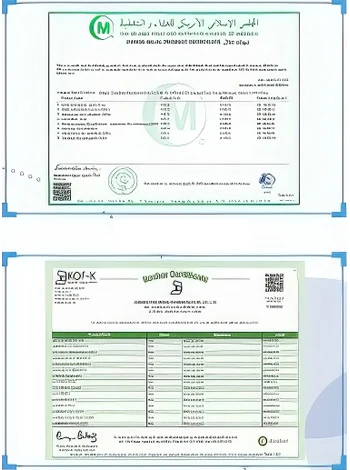



how much sodium bisulfate to lower alkalinity
How Much Sodium Bisulfate to Lower Alkalinity
When managing the chemistry of swimming pools, hot tubs, or even specific agricultural applications, controlling the alkalinity is crucial for ensuring optimal water quality and overall balance. High alkalinity can lead to cloudy water, scale formation, and difficulty in maintaining the correct pH levels. One effective method to lower alkalinity is by using sodium bisulfate, a widely recognized acidifying agent.
Understanding Alkalinity and Its Importance
Alkalinity is a measure of the water's buffering capacity, or its ability to resist changes in pH. It is primarily due to the presence of bicarbonates, carbonates, and hydroxides in water. Ideal alkalinity levels for pool water usually range between 80 to 120 parts per million (ppm). When alkalinity rises beyond this range, it can lead to problems such as
1. Cloudy Water High alkalinity can make water cloudy and less inviting. 2. pH Imbalances It becomes more challenging to maintain the desired pH level, usually between 7.2 and 7.8. 3. Scale Formation Excess alkalinity encourages calcium and other minerals to precipitate out of the water, leading to scale buildup on surfaces and equipment.
The Role of Sodium Bisulfate
Sodium bisulfate, commonly known as dry acid or sodium hydrogen sulfate, is a white crystalline compound used to lower pH and alkalinity in various applications. When added to water, sodium bisulfate dissociates to release hydrogen ions, effectively reducing alkalinity.
How Much Sodium Bisulfate Do You Need?
how much sodium bisulfate to lower alkalinity

The amount of sodium bisulfate required to lower alkalinity depends on several factors, including the initial alkalinity level, the desired alkalinity level, and the volume of water being treated. A general guideline for swimming pools is to use about 1.5 pounds of sodium bisulfate to lower the alkalinity by approximately 10 ppm for every 10,000 gallons of water.
Here’s how you can calculate the amount needed
1. Determine Current Alkalinity Test the water to find the current alkalinity level in ppm. 2. Decide Desired Alkalinity Establish your target alkalinity level (typically 80-120 ppm). 3. Calculate the Difference Subtract the desired level from the current level to find out how much you need to decrease the alkalinity. 4. Apply the Formula Use the formula \[ \text{Amount of Sodium Bisulfate (lb)} = \left(\frac{\text{Current Alkalinity} - \text{Desired Alkalinity}}{10}\right) \times 1.5 \] for every 10,000 gallons.
Important Considerations
- Add Gradually Always add sodium bisulfate in smaller increments, testing the water after each addition to avoid over-correction. - Circulate and Mix Ensure the pool’s circulation system is running to help mix the chemicals evenly. - Safety First Handle sodium bisulfate with care, using gloves and goggles, as it can be an irritant.
Conclusion
Lowering alkalinity with sodium bisulfate is an effective and straightforward method for maintaining water quality in pools and other applications. With the correct calculation and approach, it’s possible to achieve the desired alkalinity levels, ensuring clear, safe, and balanced water. Regular testing and maintenance are essential to prevent future imbalances and ensure a pleasant swimming experience.
-
Why Sodium Persulfate Is Everywhere NowNewsJul.07,2025
-
Why Polyacrylamide Is in High DemandNewsJul.07,2025
-
Understanding Paint Chemicals and Their ApplicationsNewsJul.07,2025
-
Smart Use Of Mining ChemicalsNewsJul.07,2025
-
Practical Uses of Potassium MonopersulfateNewsJul.07,2025
-
Agrochemicals In Real FarmingNewsJul.07,2025
-
Sodium Chlorite Hot UsesNewsJul.01,2025










